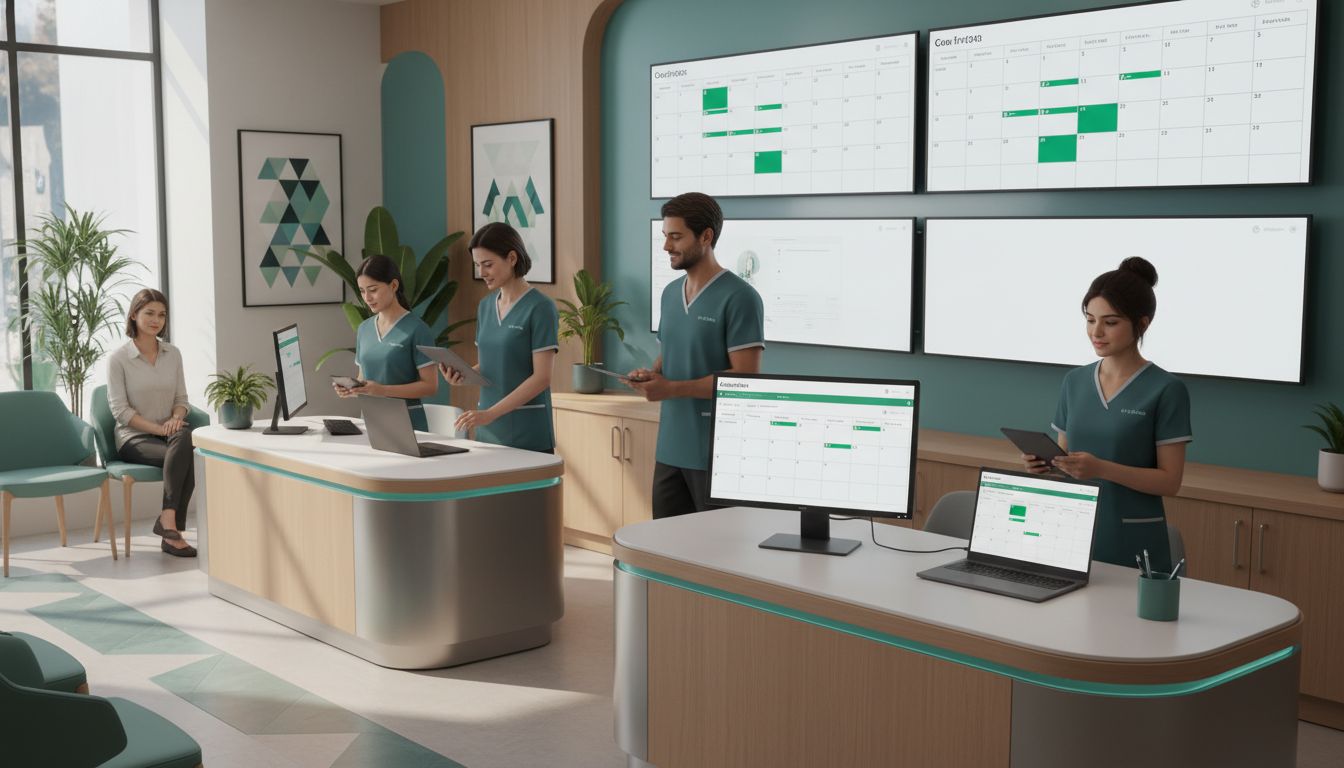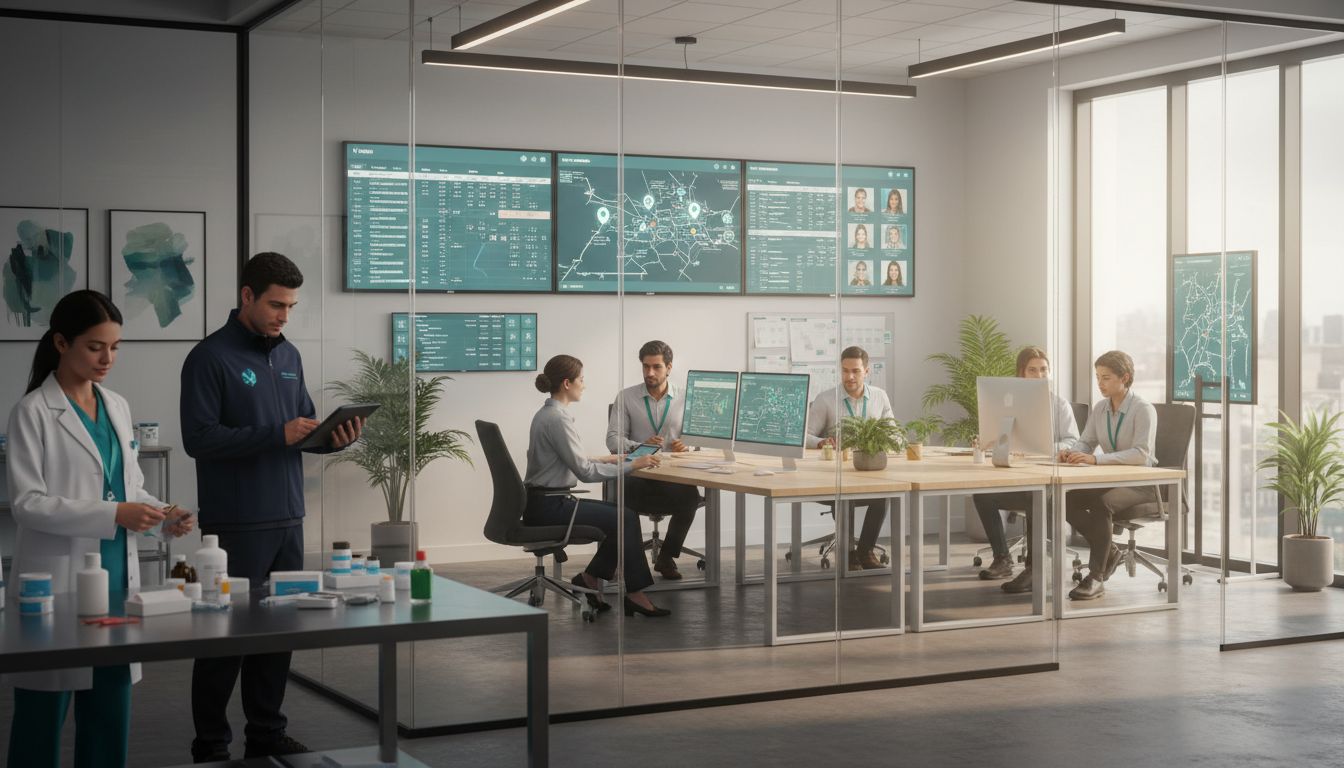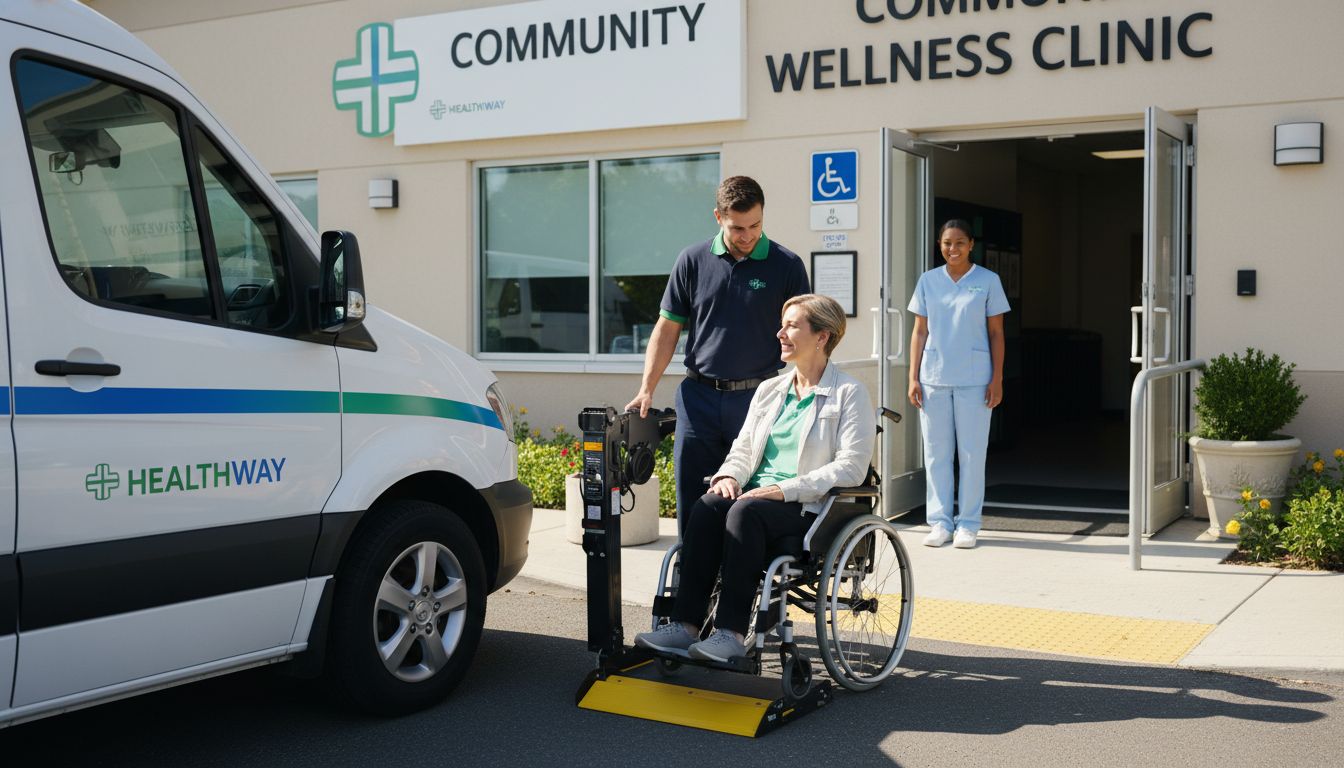Non-Emergency Medical Transportation Solutions for 2025
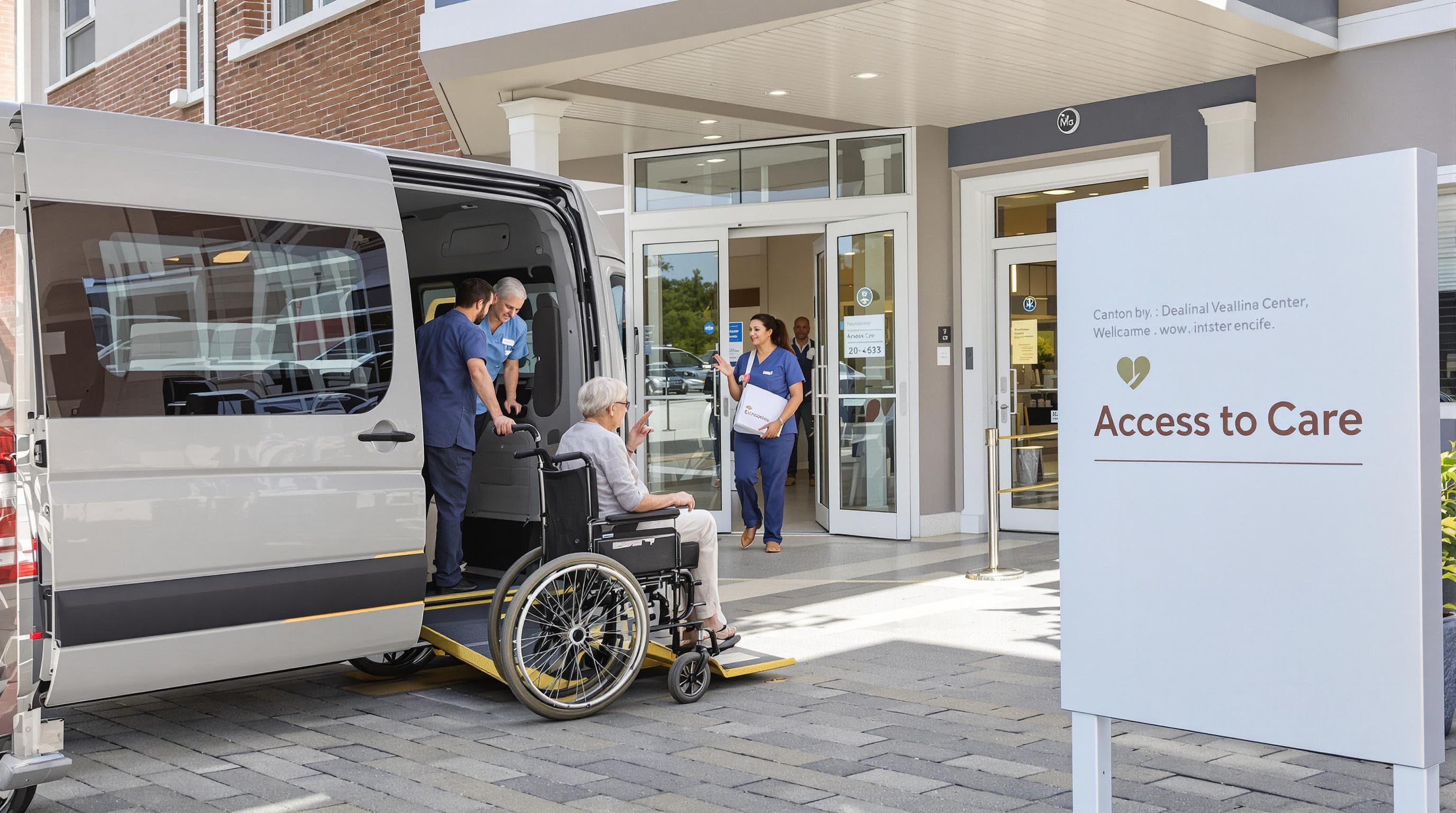
Getting to a medical appointment sounds simple, but the reality is far more complicated. About 5.8 million people in the US miss or delay care every year because they just cannot get a ride. For a healthcare system known for cutting-edge treatments, that number feels jarring. The real surprise is that solving this one problem could unlock an $11 return for every dollar spent — and change the conversation around healthcare access entirely.
Table of Contents
- Understanding Non-Emergency Medical Transportation Needs
- Key Benefits For Healthcare Providers And Agencies
- Compliance, Regulations, And Funding In 2025
- Best Practices For Managing NEMT Services
Quick Summary
| Takeaway | Explanation |
|---|---|
| Transportation barriers impact healthcare access | About 5.8 million people in the U.S. delayed medical care due to transportation limitations, highlighting the need for effective non-emergency medical transportation (NEMT) solutions. |
| NEMT improves patient outcomes | Access to transportation significantly reduces missed appointments, enhancing treatment adherence and overall patient health, especially for those with chronic conditions. |
| Economic efficiency through NEMT | Effective NEMT services can generate an $11.08 return on investment per dollar spent by reducing avoidable hospitalizations and optimizing resource allocation in healthcare systems. |
| Strategic compliance and innovation are key | Organizations must navigate complex regulations and funding opportunities by implementing robust technological solutions while adhering to compliance standards for patient care and safety. |
| Best practices enhance NEMT management | Implementing operational standardization, personalized support, and network integration can optimize NEMT services, improving patient experiences and operational efficiency. |
Understanding Non-Emergency Medical Transportation Needs
Non-emergency medical transportation (NEMT) represents a critical healthcare infrastructure component addressing mobility challenges for patients who cannot independently travel to medical appointments. The complex landscape of patient transportation reveals significant systemic gaps that impact healthcare access and patient outcomes.

The Transportation Access Challenge
Transportation barriers create substantial obstacles in healthcare delivery. Research from the National Institutes of Health reveals a startling statistic: approximately 5.8 million people in the United States delayed medical care in 2017 due to transportation limitations. This data underscores the profound impact of transportation accessibility on patient health management.
Rural and underserved communities experience these challenges most acutely. A targeted study in Iosco County, Michigan demonstrated that 9.4% of seniors encountered disruptions in medical care due to inadequate transportation options. These disruptions can lead to delayed treatments, missed preventive care, and potentially escalating health complications.

Demographic and Healthcare Dynamics
Multiple demographic factors contribute to the growing demand for non-emergency medical transportation. Aging populations, individuals with chronic conditions, patients with mobility restrictions, and those without personal transportation create a substantial need for specialized medical transit solutions.
The complexity of patient transportation extends beyond simple point-to-point movement. It involves coordinating multiple stakeholders including healthcare providers, insurance companies, transportation vendors, and patients themselves. Each interaction represents an opportunity for potential communication breakdown or logistical challenge.
Economic and Healthcare Impact
The economic implications of inefficient non-emergency medical transportation are significant. Missed medical appointments result in increased healthcare costs, reduced treatment effectiveness, and potential health deterioration. Healthcare systems bear substantial financial burdens when patients cannot consistently access necessary medical services.
Moreover, transportation challenges disproportionately affect vulnerable populations including low-income individuals, seniors, people with disabilities, and those living in geographically isolated regions. Addressing these transportation gaps requires innovative, technology-driven solutions that can provide reliable, accessible, and cost-effective medical transit options.
Understanding these multifaceted transportation needs is crucial for developing comprehensive non-emergency medical transportation strategies that prioritize patient care, accessibility, and systemic efficiency.
Key Benefits for Healthcare Providers and Agencies
Non-emergency medical transportation (NEMT) offers transformative advantages for healthcare providers and agencies, extending far beyond simple patient movement. By strategically implementing comprehensive transportation solutions, organizations can achieve substantial operational, financial, and patient care improvements.
Economic and Cost Management Benefits
Research from the Medical Transportation Access Coalition demonstrates the profound economic impact of NEMT services. In Florida, every $1 invested in non-emergency medical transportation generated an impressive $11.08 return by reducing avoidable hospitalization costs. This remarkable return on investment highlights the critical role of efficient transportation in healthcare financial management.
Healthcare agencies can significantly reduce unnecessary expenditures by preventing treatment delays, managing chronic conditions more effectively, and minimizing emergency room utilization. Proactive transportation solutions help organizations optimize resource allocation, redirecting funds from reactive medical interventions to preventative care strategies.
Patient Adherence and Treatment Outcomes
A systematic review and meta-analysis conclusively demonstrated that providing transportation to patients facing mobility challenges dramatically decreases missed medical appointments. Improved appointment attendance translates directly into enhanced treatment adherence, more consistent patient monitoring, and potentially better health outcomes.
By removing transportation barriers, healthcare providers can ensure patients receive timely medical interventions, follow-up care, and preventative treatments. This approach is particularly crucial for managing chronic conditions, supporting elderly patients, and serving populations with limited mobility or socioeconomic constraints.
Operational Efficiency and Resource Integration
Research from the National Academies of Sciences suggests that coordinating non-emergency medical transportation with existing public transportation and human services can dramatically improve operational efficiency. This integrated approach reduces unnecessary service duplication and leverages existing transportation infrastructure.
Healthcare agencies can benefit from streamlined coordination between medical providers, transportation vendors, and public transit systems. Such collaborative models enhance service quality, improve safety protocols, and create more comprehensive mobility solutions for patients.
Strategic NEMT implementation represents more than a logistical solution it is a sophisticated approach to patient-centered healthcare delivery. By addressing transportation challenges proactively, healthcare providers can transform patient experiences, optimize operational resources, and contribute to broader public health objectives.
To highlight the major benefits that NEMT offers to healthcare providers and agencies, the following summary table organizes these advantages for easier comparison and reference.
| Benefit Category | Description |
|---|---|
| Economic and Cost Management | $11.08 ROI per $1 spent; reduces avoidable hospitalizations and unnecessary expenditures |
| Patient Adherence & Treatment Outcomes | Reduces missed appointments; improves chronic care, follow-ups, and preventative treatment adherence |
| Operational Efficiency & Resource Integration | Streamlines coordination, reduces service duplication, leverages public transit, and improves safety protocols |
Compliance, Regulations, and Funding in 2025
The landscape of non-emergency medical transportation (NEMT) continues to evolve, with complex regulatory frameworks and innovative funding mechanisms shaping the industry in 2025. Healthcare providers and transportation agencies must navigate an intricate environment of compliance requirements, technological standards, and emerging financial support opportunities.
Federal Regulatory Landscape
The Federal Motor Carrier Safety Administration (FMCSA) has announced over $90 million in grant opportunities for fiscal year 2025, specifically through the High Priority Innovative Technology Deployment (HP-ITD) Grant Program. This significant investment signals a strategic focus on advancing technological capabilities and promoting intelligent transportation system applications for commercial motor vehicle operations.
These federal initiatives emphasize the importance of technological innovation, safety protocols, and operational efficiency in medical transportation. Agencies must demonstrate compliance with increasingly sophisticated regulatory standards that prioritize patient safety, data protection, and service quality.
State-Level Funding and Access Initiatives
Virginia’s 2025 state budget provides a compelling example of targeted NEMT funding, with a $1 million allocation for a pilot program addressing transportation challenges in rural and underserved communities. This initiative specifically targets uninsured residents in medically underserved areas, highlighting a growing trend of state-level interventions to improve healthcare accessibility.
Other states are likely to follow similar models, developing targeted funding mechanisms that address specific transportation barriers. These programs typically focus on vulnerable populations including seniors, individuals with disabilities, low-income residents, and those living in geographically isolated regions.
Compliance and Technological Integration
Compliance in 2025 extends beyond traditional regulatory checkboxes. Healthcare transportation providers must now demonstrate comprehensive approaches to data security, patient privacy, operational transparency, and technological interoperability. This requires sophisticated systems that can integrate multiple data sources, ensure real-time tracking, and maintain rigorous safety standards.
Key compliance considerations include HIPAA regulations, Americans with Disabilities Act (ADA) requirements, vehicle safety standards, driver qualification protocols, and advanced reporting mechanisms. Organizations must invest in robust technological infrastructure that can seamlessly adapt to evolving regulatory landscapes.
The intersection of compliance, funding, and technological innovation represents a critical strategic domain for non-emergency medical transportation providers. Success in 2025 will depend on an organization’s ability to navigate complex regulatory environments, leverage available funding opportunities, and implement cutting-edge technological solutions that prioritize patient care and operational efficiency.
This table summarizes key 2025 regulatory and funding elements for NEMT, illustrating federal and state efforts as well as major compliance requirements.
| Category | 2025 Initiative/Requirement | Example/Details |
|---|---|---|
| Federal Funding | FMCSA HP-ITD Grant Program | $90M+ allocated, focus on technology and safety |
| State Funding | Virginia Rural NEMT Pilot Program | $1M for uninsured/underserved in rural communities |
| Compliance | HIPAA, ADA, Vehicle Safety, Driver Protocols | Data security, privacy, interoperability, safety standards |
Best Practices for Managing NEMT Services
Effective management of non-emergency medical transportation (NEMT) services requires a strategic approach that balances operational efficiency, patient care, and technological innovation. Healthcare providers and transportation agencies must implement comprehensive practices that address the complex challenges of patient mobility and healthcare access.
Operational Standardization and Communication
Research published in medical transportation journals emphasizes the critical importance of standardizing patient transport processes and improving communication channels. Successful NEMT management involves creating clear protocols that ensure consistent service quality, patient safety, and seamless coordination between multiple stakeholders.
Key operational best practices include developing robust scheduling systems, implementing real-time tracking mechanisms, and establishing clear communication protocols between transportation providers, healthcare facilities, and patients. Organizations must create flexible frameworks that can adapt to diverse patient needs while maintaining high standards of reliability and efficiency.
Reducing Appointment Barriers
A comprehensive study in public health research revealed that targeted interventions in non-emergency transportation can lead to a remarkable 37% reduction in missed medical appointments. This significant finding underscores the importance of proactive transportation management in improving overall healthcare outcomes.
Effective strategies include:
- Advance Scheduling: Implementing user-friendly booking systems that accommodate patient preferences
- Personalized Support: Providing tailored transportation solutions for patients with specific mobility needs
- Reminder Systems: Developing comprehensive communication protocols to confirm and support transportation arrangements
Network Integration and Efficiency
Research on healthcare transportation networks demonstrates that implementing a unified NEMT service across healthcare systems can substantially reduce wait times and lower overall transportation costs. This approach requires sophisticated technological integration and a holistic view of patient transportation needs.
Successful NEMT management involves:
- Technology Integration: Utilizing advanced software platforms that enable real-time coordination
- Data-Driven Optimization: Continuously analyzing transportation data to improve service efficiency
- Comprehensive Vendor Management: Developing robust networks of reliable transportation providers
The most effective NEMT services go beyond simple point-to-point transportation. They represent a comprehensive approach to patient care that considers individual needs, healthcare requirements, and systemic efficiency. By implementing these best practices, healthcare providers can transform non-emergency medical transportation from a logistical challenge into a strategic advantage that improves patient outcomes and operational performance.
Frequently Asked Questions
What is non-emergency medical transportation (NEMT)?
NEMT refers to transportation services designed to help patients who do not have access to personal transportation or cannot use public transport due to medical conditions get to their medical appointments safely and reliably.
Why is NEMT important for healthcare access?
NEMT is crucial because transportation barriers prevent millions of people from attending medical appointments, ultimately leading to delayed care, worsening health conditions, and increased healthcare costs. It improves patient outcomes by ensuring consistent access to necessary medical services.
What are the economic benefits of NEMT?
Investing in NEMT services can yield an $11 return for every dollar spent by reducing avoidable hospitalizations and healthcare costs associated with missed appointments. This efficiency contributes to better resource allocation within healthcare systems.
How can healthcare providers optimize NEMT services?
Healthcare providers can optimize NEMT by implementing operational standardization, using technology for real-time scheduling and tracking, and integrating transportation solutions with existing public transport systems to enhance overall efficiency and patient care.
Ready to Eliminate Medical Transportation Barriers?
Millions of patients miss care every year because of gaps in non-emergency medical transportation. If your organization struggles with missed appointments, operational costs, or manual scheduling headaches, the challenge is all too familiar. The article above shows that reducing these barriers is not just about convenience; it leads directly to better health outcomes and measurable cost savings.
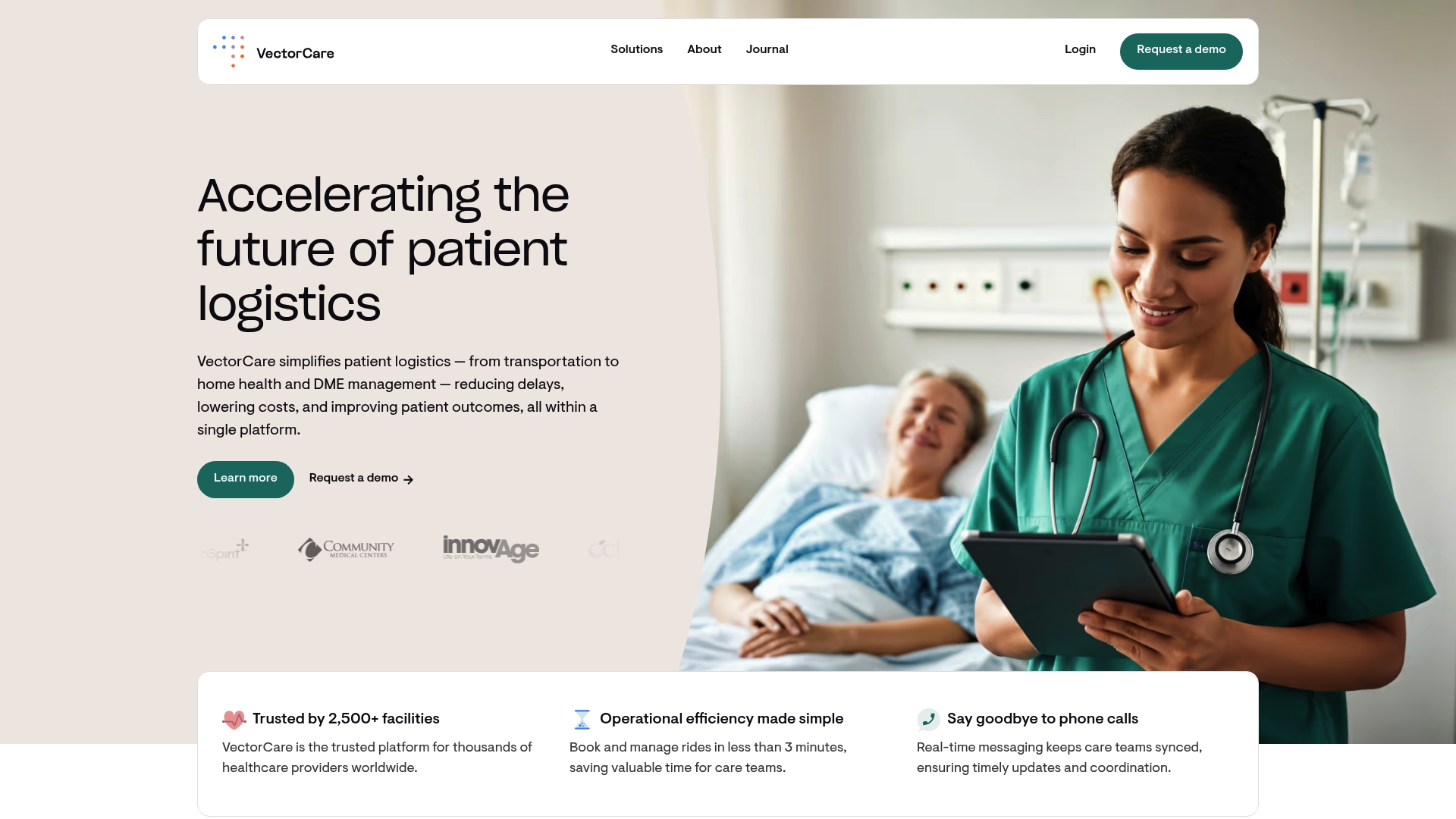
See how you can put these best practices in motion today. VectorCare offers an all-in-one solution that automates patient logistics and helps you align with 2025’s compliance, funding, and efficiency goals. Book a demo to discover how our intelligent scheduling and real-time dispatch technology can transform how your team manages healthcare transportation. Visit our platform now and take the first step toward a more connected and cost-effective future.
